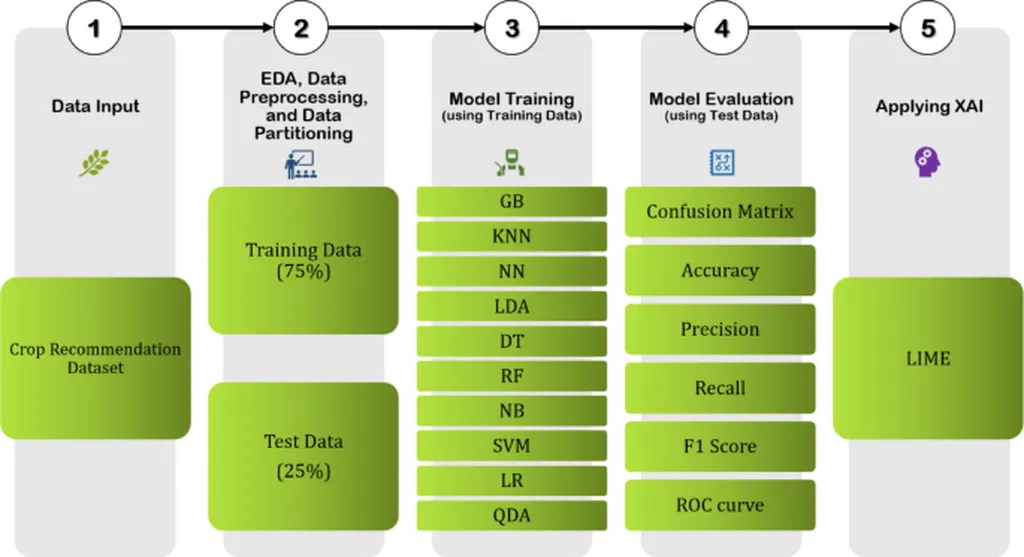In the ever-evolving landscape of smart agriculture, a groundbreaking study led by Hemalatha Gunasekaran from the College of Computing and Information Sciences at the University of Technology and Applied Sciences in Oman is set to revolutionize crop recommendation systems. Published in the journal ‘Sensors’ (translated to ‘حاسوب’ in English), this research introduces a novel approach that combines the power of machine learning with the principles of physics, promising to enhance the accuracy and reliability of agricultural predictions.
Traditional machine learning (ML) and ensemble learning (EL) models have long been the go-to methods for crop recommendations. However, these models often fall short when dealing with noisy or limited training data, leading to inaccurate predictions. Gunasekaran and her team addressed this limitation by incorporating physical laws into the ML framework, ensuring that predictions remain physically plausible.
The study conducted a comprehensive analysis of various ML and EL models, both with and without optimization, and compared their performance against a physics-informed ML model. The proposed stacking physics-informed ML model stands out by including the optimal temperature and pH for each crop as input during the training process. This dual-objective approach—fitting the data and adhering to physics laws—was achieved by integrating a penalty term into the model’s total loss function. “This ensures that the model makes predictions that are not only accurate but also physically feasible,” explains Gunasekaran.
The results were impressive. The physics-informed model achieved a remarkable accuracy of 99.50%, outperforming traditional ML and EL models with optimization. This breakthrough has significant implications for the agricultural sector, particularly in precision farming. By providing more accurate crop recommendations, farmers can optimize resource management, enhance productivity, and ultimately boost their yields.
The commercial impact of this research extends beyond the agricultural sector. In the energy sector, for instance, accurate crop recommendations can lead to more efficient use of resources, reducing the energy footprint of agricultural practices. This aligns with the growing trend towards sustainable and energy-efficient farming practices, which are crucial for meeting global energy and food security challenges.
Gunasekaran’s research opens up new avenues for future developments in smart agriculture. The integration of physics-informed models with IoT sensors and AI technologies can lead to more robust and reliable prediction systems. As Gunasekaran puts it, “This is just the beginning. The potential for further advancements in this field is immense, and we are excited to explore the possibilities.”
In conclusion, this study marks a significant step forward in the field of smart agriculture. By combining the strengths of machine learning with the principles of physics, Gunasekaran and her team have developed a model that promises to enhance the accuracy and reliability of crop recommendations. This research not only has the potential to transform agricultural practices but also to contribute to the broader goals of sustainability and energy efficiency. As we look to the future, the integration of physics-informed models with emerging technologies holds the key to unlocking new possibilities in smart agriculture.

